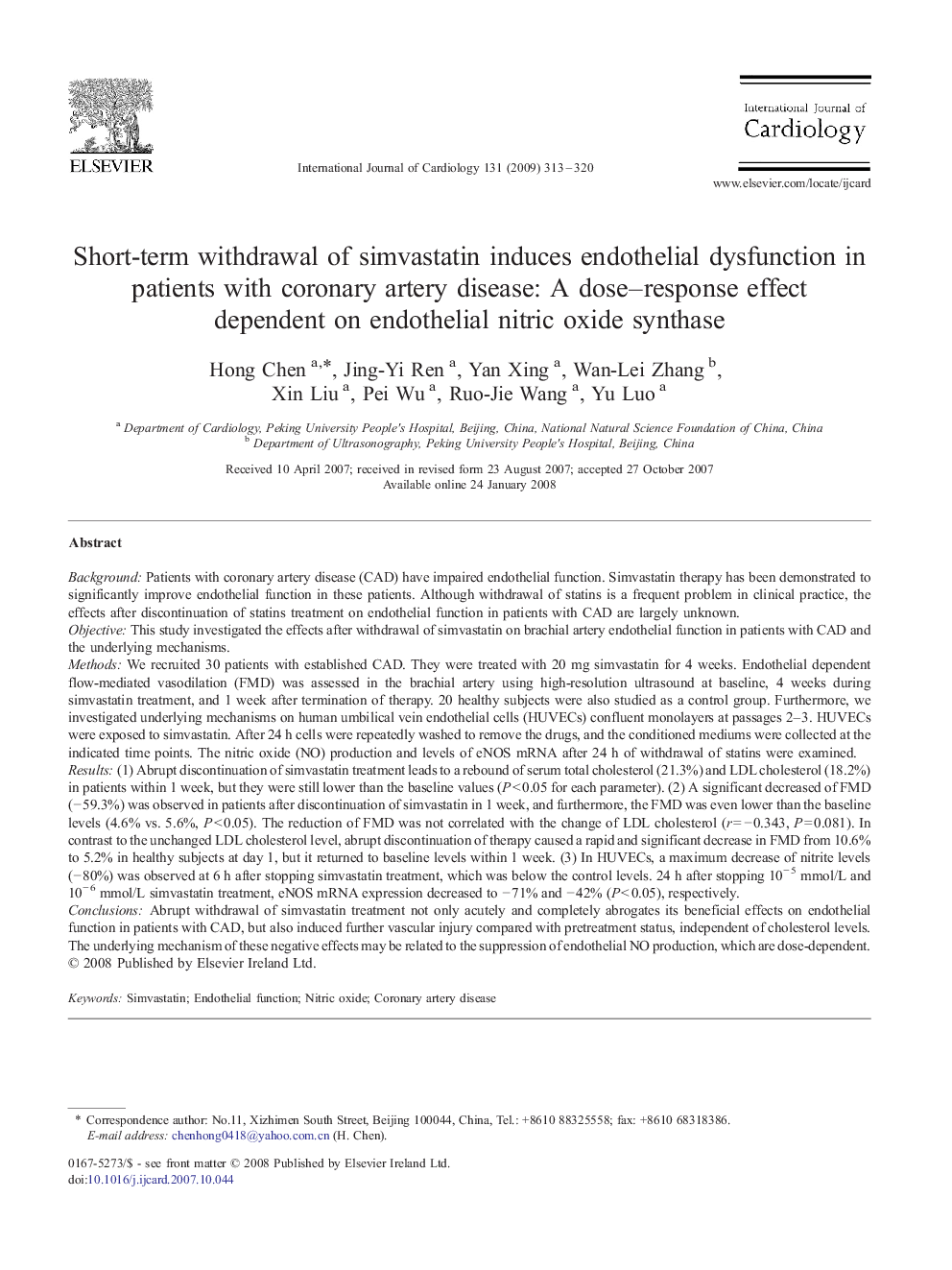| Article ID | Journal | Published Year | Pages | File Type |
|---|---|---|---|---|
| 2933727 | International Journal of Cardiology | 2009 | 8 Pages |
BackgroundPatients with coronary artery disease (CAD) have impaired endothelial function. Simvastatin therapy has been demonstrated to significantly improve endothelial function in these patients. Although withdrawal of statins is a frequent problem in clinical practice, the effects after discontinuation of statins treatment on endothelial function in patients with CAD are largely unknown.ObjectiveThis study investigated the effects after withdrawal of simvastatin on brachial artery endothelial function in patients with CAD and the underlying mechanisms.MethodsWe recruited 30 patients with established CAD. They were treated with 20 mg simvastatin for 4 weeks. Endothelial dependent flow-mediated vasodilation (FMD) was assessed in the brachial artery using high-resolution ultrasound at baseline, 4 weeks during simvastatin treatment, and 1 week after termination of therapy. 20 healthy subjects were also studied as a control group. Furthermore, we investigated underlying mechanisms on human umbilical vein endothelial cells (HUVECs) confluent monolayers at passages 2–3. HUVECs were exposed to simvastatin. After 24 h cells were repeatedly washed to remove the drugs, and the conditioned mediums were collected at the indicated time points. The nitric oxide (NO) production and levels of eNOS mRNA after 24 h of withdrawal of statins were examined.Results(1) Abrupt discontinuation of simvastatin treatment leads to a rebound of serum total cholesterol (21.3%) and LDL cholesterol (18.2%) in patients within 1 week, but they were still lower than the baseline values (P < 0.05 for each parameter). (2) A significant decreased of FMD (− 59.3%) was observed in patients after discontinuation of simvastatin in 1 week, and furthermore, the FMD was even lower than the baseline levels (4.6% vs. 5.6%, P < 0.05). The reduction of FMD was not correlated with the change of LDL cholesterol (r = − 0.343, P = 0.081). In contrast to the unchanged LDL cholesterol level, abrupt discontinuation of therapy caused a rapid and significant decrease in FMD from 10.6% to 5.2% in healthy subjects at day 1, but it returned to baseline levels within 1 week. (3) In HUVECs, a maximum decrease of nitrite levels (− 80%) was observed at 6 h after stopping simvastatin treatment, which was below the control levels. 24 h after stopping 10− 5 mmol/L and 10− 6 mmol/L simvastatin treatment, eNOS mRNA expression decreased to − 71% and − 42% (P < 0.05), respectively.ConclusionsAbrupt withdrawal of simvastatin treatment not only acutely and completely abrogates its beneficial effects on endothelial function in patients with CAD, but also induced further vascular injury compared with pretreatment status, independent of cholesterol levels. The underlying mechanism of these negative effects may be related to the suppression of endothelial NO production, which are dose-dependent.
